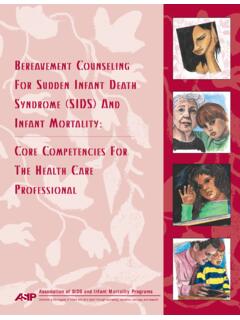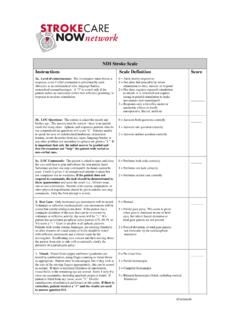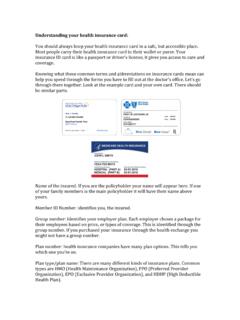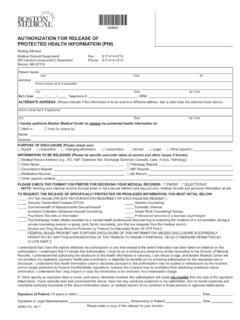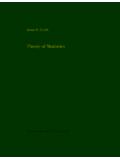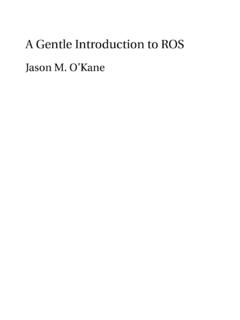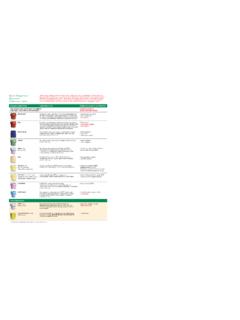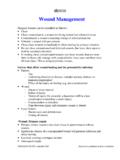Transcription of Riker Sedation-Agitation Scale (SAS) - Boston Medical …
1 Riker Sedation-Agitation Scale (SAS)Score Term Descriptor 7 Dangerous agitation Pulling at ET tube, trying to remove catheters, climbing over bedrail, striking at staff, thrashing side-to-side 6 Very Agitated Requiring restraint and frequent verbal reminding of limits, biting ETT 5 Agitated Anxious or physically agitated, calms to verbal instructions 4 Calm and Cooperative Calm, easily arousable, follows commands 3 Sedated Difficult to arouse but awakens to verbal stimuli or gentle shaking, follows simple commands but drifts off again 2 Very Sedated Arouses to physical stimuli but does not communicate or follow commands, may move spontaneously 1 Unarousable Minimal or no response to noxious stimuli, does not communicate or follow commandsGuidelines for SAS Assessment1. Agitated patients are scored by their most severe degree of agitation as described 2. If patient is awake or awakens easily to voice ( awaken means responds with voice or headshaking to a question or follows commands), that s a SAS 4 (same as calm and appropriate might even be napping).
2 3. If more stimuli such as shaking is required but patient eventually does awaken, that s SAS 3. 4. If patient arouses to stronger physical stimuli (may be noxious) but never awakens to thepoint of responding yes/no or following commands, that s a SAS 2. 5. Little or no response to noxious physical stimuli represents a SAS 1. This helps separate sedated patients into those you can eventually wake up (SAS 3), those youcan't awaken but can arouse (SAS 2), and those you can t arouse (SAS 1).1. Prospective evaluation of the Sedation-Agitation Scale in adult ICU patients. Crit Care Med 1999;27 Assessing sedation in ventilated ICU patients with the bispectral index and the sedation -agitationscale. Crit Care Med 1999; 27 Confirming the reliability of the Sedation-Agitation - Scale in ICU nurses without prior experience in itsuse. Pharmacotherapy 2001; 21 Validating the Sedation-Agitation Scale with the bispectral index and visual analog Scale in adult ICUpatients after cardiac surgery.
3 Intensive Care Med 2001; 27:853-858.

